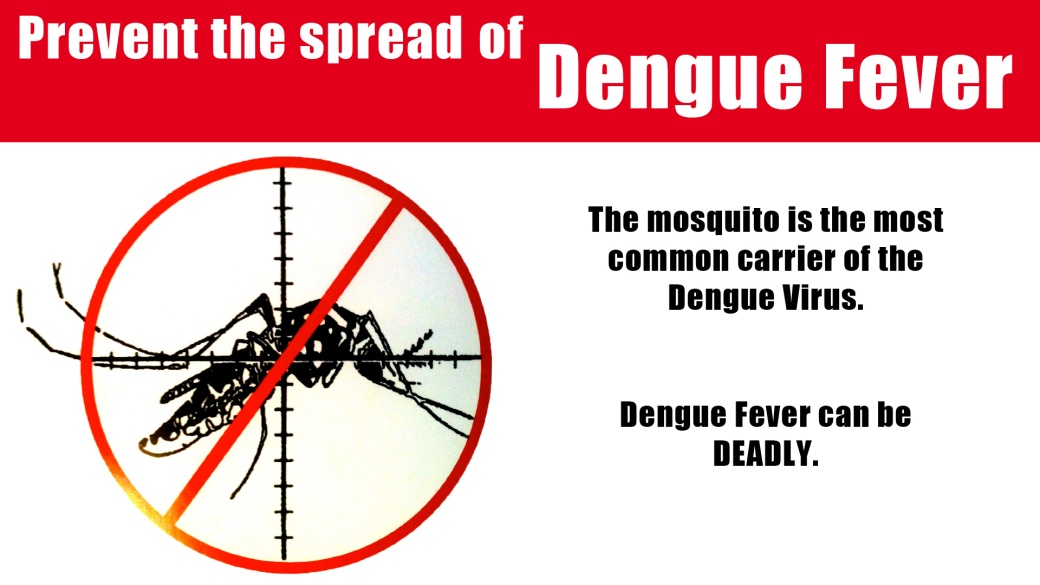

http://search.proquest.com/docview/1778073102?pq-origsite=gscholar
Dengue is becoming an escalating problem in the world. Right now the world is seeing more and more cases each year. More than ⅖ of the world population live in areas at risk for the dengue fever. Travelers are also at risk if they visit these areas, and one relatable area that all would know is the Caribbean. Now I will talk about the epidemiology. There are four different dengue viruses that are recognized and once infected with one of the viruses, you will have a lifelong immunity to that specific dengue virus. Mosquitos will carry the disease for the rest of their life but humans will not. Mosquitos are believed to contract the disease from forest in tropical regions through vertical transmission in a mosquito.
The Dengue virus in the past 60 years has increased in clinical severity. The Dengue virus cases have risen in part to uncontrolled urbanization in the tropics. Urbanization results in inadequate management of water and waste. This leads to large water disposal areas which are in large non biodegradable containers that become homes for the larvae. Also, air travel has been another way for the take off of this disease because an infected human can take the disease back to their homeland and thus the disease can spread. These are the more important reasons of why the disease is increasingly becoming a problem.
The pathology of Dengue is distinguished by the presence of increased vascular permeability. Vascular permeability is the capacity of blood vessel wall to allow the flow of small molecules like water in and out of the vessel. The dengue virus is mostly found in the liver and reticuloendothelial (involved in the immune response and are most commonly found in liver) systems.
The clinical features of dengue can vary from patient to patient. There are five different presentations of this disease. The five different presentations are as followed: nonspecific febrile illness, classic dengue, dengue haemorrhagic fever, dengue haemorrhagic fever with dengue shock syndrome, and other unusual symptoms such as liver failure. Young children under the age of 15 dengue infections are asymptomatic or minimally symptomatic. A study in Thailand showed that only 13% of children under the age of 15 missed school for more than one day with the dengue virus.
Classic dengue is most common in people above the age of 15 and these are less likely to be asymptomatic. This dengue is very abrupt that will bring a high fever accompanied by a high fever. The recovery for this disease will take a long day and may even include depression.
Dengue haemorrhagic fever is most common in children under the age of 15 in hyperendemic areas. These types of areas are in climate where the temperature is above 80 degrees all year round. Black populations are at a decreased risk of contracting this disease. Black populations are at a decreased risk of contracting the disease because the disease is increased by the capillary permeability and haemostatic changes. If plasma leakage occurs then victims can experience effusions and ascites with bleeding. There will also be an development of enlargement or tenderness of the liver that occurs in 40% of patients. Death can be in up to 20% of patients with this specific type of dengue fever. Only .2% of hospitals know how to deal with type of dengue fever. Dengue shock can be very deadly in patients because if shock occurs, then 50% of patients with shock will die. Dengue shock brings symptoms of vomiting, changing in level of consciousness, a decrease in platelet count, and sustained abdominal pain.
Dengue can be transmitted back to your homeland even though you may not live in a dengue present region. Travellers can unknowingly contract dengue because transmission is maintained between the epidemics. For example, a test conducted in Germany and Australia showed that 8% of travellers returning with a febrile illness were found to have dengue. The incubation period of dengue can vary from 3 to 14 days and the viraemia can persist up to 12 days. Dengue can be ruled out if the symptoms begin more than 2 to 3 weeks after a patient has left an epidemic area. Dengue haemorrhagic and dengue shock is very rare in travellers.
As of right now their is no specific treatment for dengue. A medical professional would be trained to run different assessments in order to see how serve and how to improve the dengue virus in you. Different assessments they would run is testing a patient’s packed cell count, platelet count, liver function tests, prothrombin time, partial thromboplastin time, electrolytes, and blood gas analysis. This would allow the doctor to determine how to treat the certain affected region of your body. Since there is no treatment for dengue, the doctor would just treat the affected part of the body with drugs proven to improve that affected body part. For example: If a patient is experiencing a fever the doctor would give that patient Paracetamol. Aspirin or other non inflammatory rugs would be avoided because these drugs can increase your risk of Reye’s syndrome and haemorrhage. To avoid dengue or completely wipe out dengue would be to kill or contain all mosquitos which is close to impossible.